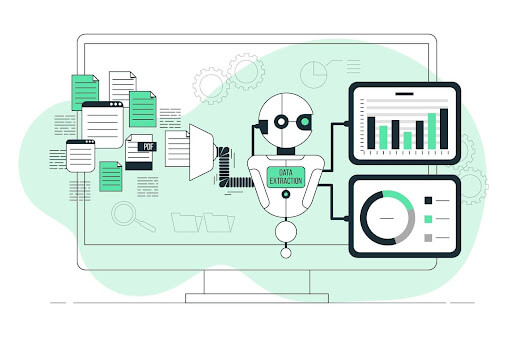In This blog
Technology and apps are constantly evolving. This helps make the app more relevant to market expectations. However, out of the blue, you will see an update doing the exact opposite of what it is intended to—like the Microsoft blue screen of death error that caused a global shutdown.
The Microsoft CrowdStrike update caused around 4295 flights worldwide to either be canceled or delayed in a single day, affecting aviation, finance, banking, healthcare, and several other sectors. Such errors can often occur if a product’s updates or fixes are not diligently tested, and even a minute issue can malfunction the entire operation.
Thus, exhaustive testing of each feature and change is crucial to ensure that such errors do not make it to the final release. However, thorough testing often becomes time-consuming and impractical, given the organization’s constraints. This is where test automation plays a crucial role.
A well-defined test automation strategy ensures a systematic approach to automating tests, maximizing their effectiveness and return on investment.
We’ll discuss the importance of automation in testing, explore its key benefits, and provide a comprehensive checklist to make test automation part of your entire digital transformation strategy.
The Importance of a Test Automation Strategy
The growing complexity of software and the fast pace of development often make manual testing increasingly challenging. This can be because of factors like:
-
Time Constraints: Thorough manual testing of every feature with each development iteration can be incredibly time-consuming. Rushing testing can lead to compromising software quality.
-
Regression Testing Burden: With new features and bug fixes being introduced frequently, regression testing becomes a significant burden for manual testers. Re-running the same tests repeatedly can be tedious and error-prone.
-
Inconsistency: Manual testing can be subjective and prone to human error. Different testers may interpret requirements differently and miss critical bugs.
Thus, most organizations have adopted automation testing into their overall testing strategy. Test Automation leverages automation tools to simplify and automate repetitive testing tasks. These tests can be executed quickly and reliably, freeing up valuable time for testers to focus on more strategic activities like exploratory testing and edge-case scenario exploration.

A well-defined test automation strategy helps overcome these challenges by offering several key advantages, like:
-
Faster Test Execution: Compared to manual tests, automated tests can be completed much more quickly, saving tester time. As a result, testing cycles can occur more frequently, and developers can receive feedback faster.
-
Improved Test Coverage: Automated tests scale better to cover more scenarios and functionalities. This leads to more comprehensive test coverage and a higher likelihood of catching defects.
-
Enhanced Consistency: Automated tests are executed consistently every time, eliminating the possibility of human error and ensuring reliable results.
-
Focus on Exploratory Testing: When automation covers different tests, testers are freed up to focus on more exploratory testing, where they can delve deeper into the software and identify edge-case scenarios that automation might miss.
The Benefits of a Test Automation Strategy
Automation testing doesn’t just have an impact on overall productivity and resource planning but also directly affects the outcomes of the product. This includes:
Improved Software Quality and Reduced Defects
Automated tests can cover a wider range of scenarios than manual testing, leading to more comprehensive test coverage. By catching defects early, you can deliver higher-quality software to your users.
Faster Time-to-Market and Reduced Development Costs
As automation improves test efficiency, comprehensive tests take a much shorter time to complete, which can streamline your development process and accelerate time-to-market. This allows you to get your product to users faster and gain a competitive edge.
Additionally, by catching defects earlier, you can reduce the need for costly rework and revisions later in the development cycle.
Improved Team Morale and Focus
When testers work on comprehensive and complex tests, they might lose concentration, leading to a higher chance of human errors and escaped defects. Freeing up testers from those tedious and time-consuming tests allows them to focus on more challenging and engaging activities, where their human judgment and abilities might be more beneficial.
Integration with DevOps
Automated tests can be triggered automatically with each code commit, providing continuous feedback and enabling faster deployments. This integration promotes a culture of collaboration and continuous improvement within the development team, creating a functional DevOps process.
Thus, while test automation offers significant benefits, it’s important to acknowledge a few potential drawbacks:
-
Upfront Investment: A test automation strategy’s initial tool and training costs must be covered before implementation.
-
Maintenance Costs: Automated tests need to be maintained and updated as the software evolves, requiring ongoing effort from the testing team.
However, the long-term benefits of a well-designed test automation strategy far outweigh the initial investment. By having a well-researched test automation strategy example checklist in place, organizations can maximize the ROI on automation testing and create a more focused approach for improved outcomes.
Checklist for a Test Automation Strategy in 2024
If you want to know how to start automation testing from scratch, a well-planned test automation strategy checklist is a crucial starting point. This allows you to follow a step-by-step process to ensure that you are leveraging automation effectively.

The test automation strategy checklist usually follows the following steps:
1. Define the Project Scope
The first step is to define your overall testing goals and objectives clearly. What do you aim to achieve with test automation? Is it to improve regression testing efficiency, increase test coverage for critical functionalities, or free up testers for exploratory testing?
By answering these crucial questions, you can determine the framework and approach for your test cases. For example, if you want to implement an agile behavior-driven development (BDD) framework, you can divide your test cases using the 80/20 rule.
Here, 80% of the test cases can be automated, while the remaining 20%, which requires some human intervention, can be tested manually using regression testing or other methodology.
2. Identify Areas for Automation
As we covered in the example, you can now determine which test cases need to be automated. Since not all test cases are ideal for automation, you can consider factors like:
-
Repetitive Tests: Tasks that are repetitive and time-consuming in manual testing are prime candidates for automation. Regression testing, smoke testing, and data-driven tests often fall into this category.
-
Stable Functionalities: Focus on automating tests for functionalities that are unlikely to undergo frequent changes. This minimizes the maintenance effort required for automated tests.
-
High-Risk Areas: Consider automating tests for critical functionalities or areas with a high risk of introducing defects. This ensures these areas receive thorough and consistent testing.
By carefully evaluating your test suite and considering these factors, you can identify the most suitable areas for automation and maximize the return on your investment.
3. Understand Technology, Tools, and Resources
Before diving into automation, it’s crucial to assess your resource constraints. This includes factors like:
-
Budget: A test automation strategy needs to be put into practice, which may involve buying extra hardware, training, and tools at first. Be realistic about your budget limitations and choose tools that align with your financial resources.
-
Team Skills: Does your team possess the necessary skills to develop and maintain automated tests? If not, consider training or hiring personnel with automation expertise.
-
Project Timeline: Factor in the time required to develop and integrate automated tests. Ensure your project timeline allows for this additional effort.
Additionally, you will also need to factor in the tools and technology required to support your testing requirements, including:
-
The types of applications that should be covered in your automation tests—web-based, desktop-based, SAP, mobile, and more
-
The access, environments, APs, and libraries that you will need for test automation
-
The platforms and apps that you will need to test for so that your product is ready for final release
4. Risk Analysis
Risk analysis is a crucial element of the test automation strategy checklist. It should usually cover areas like:
-
Description and relevant metadata
-
The severity of the risk, and how much can it impact the project?
-
Probability of the risk, how much is the likelihood of the risk happening?
-
Minimization or action that can help reduce or address the risk
-
Cost estimate for addressing or minimizing the risk
5. Develop Clear and Concise Test Cases
The success of automation testing is primarily based on the quality of test cases that you choose and leverage. To make sure that the test cases
-
Focus on Functionality: Clearly define the specific functionality or behavior each test case aims to verify.
-
Actionable Steps: Outline the step-by-step actions the automated test will perform.
-
Expected Results: Specify the expected outcome for each test case, ensuring you can verify success or failure.
Adhering to these best practices and choosing the right test automation tool can help you create a pathway for successful automation testing of your test cases.
6. Establish Data Management Strategies
Test automation often relies on various types of test data. To select the best approach, you can:
-
Test Data Creation: Determine how you will create the test data required for your automated tests. This could involve using mock data generators or leveraging existing test data sets.
-
Test Data Management: Develop a plan for managing your test data, ensuring its accuracy and consistency throughout the testing process.
-
Version Control: Integrate test data with your version control system to track changes and ensure you’re using the appropriate data for each test execution.
These robust data management practices will help ensure the reliability and effectiveness of your automated tests.
7. Integrate Automated Tests Into Your CI/CD Pipeline
Continuous Integration and Continuous Delivery (CI/CD) pipelines automate the software development lifecycle. Integrating your automated tests into the CI/CD pipeline allows for:
-
Automatic Test Execution: Automated tests are triggered automatically with each code commit or build, providing continuous feedback on code quality.
-
Faster Releases: By automating testing, you can streamline the development process and accelerate software releases.
-
Improved Collaboration: Integration with CI/CD fosters closer collaboration between development and testing teams.
By leveraging CI/CD pipelines, you can ensure your automated tests are seamlessly integrated into your development workflow for faster feedback and efficient delivery.
8. Continuous Review & Feedback
Just like any software, automated tests require ongoing monitoring and maintenance. Thus, you need to implement a continuous review and feedback loop to help you:
-
Monitor Test Execution: Regularly monitor the execution of your automated tests, identifying any failures or unexpected behavior.
-
Address Bugs: Investigate and address any bugs identified within your automated tests or the software under test.
-
Update Scripts: As the software under test evolves, update your automated test scripts to maintain their accuracy and effectiveness.
By establishing a well-defined process for monitoring and maintaining your automated tests, you can ensure they continue to deliver value throughout the software development lifecycle.
Conclusion
By having an automated testing strategy as part of your DevOps process, you can streamline testing processes, improve efficiency, enhance software quality, and take away the guesswork in any part of the process. Thus, building and implementing a test automation strategy checklist in 2024 is crucial for your product’s success and stability.
By following the software testing best practices checklist and understanding test automation frameworks, you can unlock test automation’s full potential and achieve a significant competitive edge.
PractiTest offers an agnostic test automation tool that integrates data and insights from multiple test automation tools. This allows you to extract valuable information from these tools and create a more granular report. This analysis helps you understand problematic areas and implement process improvements in your QA project management for testing, tracking, reporting, and resolving test errors.
























